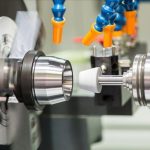
Non-standard mold: common faults and repair methods
Non-standard mold parts are mold parts that designers and manufacturers customize according to specific product requirements. For example, sliders, inclined tops, cylinders, springs, etc. These parts may experience some faults during use, such as jamming, wear, fracture, deformation, etc. These faults can affect the normal operation of the mold, cause the product quality to decline, or even lead to production accidents. Therefore, it is very important to detect and repair non-standard mold parts faults in time.
Here are some common faults and repair methods of non-standard mold parts:
– Slider jamming: Slider is a kind of non-standard mold part that realizes the complex action of the mold. It usually works with guide pillars, guide sleeves, inclined pins, etc. Slider jamming can have various reasons, such as the gap between the slider and the guide pillar is too small or too large, the cooperation between the slider and the guide sleeve is poor, the surface of the slider has dirt or rust, or the slider suffers from excessive impact force or friction force. There are several repair methods for slider jamming:
– Adjust the gap between the slider and the guide pillar to meet the design requirements, generally 0.01~0.03mm.
– Check the cooperation between the slider and the guide sleeve. If there is damage or deformation, replace the new guide sleeve or repair it.
– Clean the surface of the slider, remove dirt or rust, and apply lubricating oil or rust inhibitor.
– Reduce the impact force or friction force on the slider and avoid using excessive pressure or speed.

Spring deformation: Spring is a kind of non-standard mold part that realizes the elastic action of the mold. It is usually made of metal wire or sheet. Spring deformation can have various reasons. For instance:
– Spring material is unqualified or hardness is not enough.
– Spring design is unreasonable or manufacturing is inaccurate.
– Spring suffers from excessive pressure or temperature, etc.
There are several repair methods for spring deformation:
– Replace the qualified spring material and perform appropriate heat treatment to improve its hardness and elasticity.
– Optimize the spring design, increase its number of turns or change its shape to reduce its stress concentration.
– Precisely manufacture the spring and ensure its cooperation accuracy and clearance with the mold.
– Control the pressure or temperature on the spring and avoid using excessive force or temperature.
These are some common faults and repair methods of non-standard mold parts. I hope they can help you. If you have any other questions, please feel free to consult me!







Leave a Reply